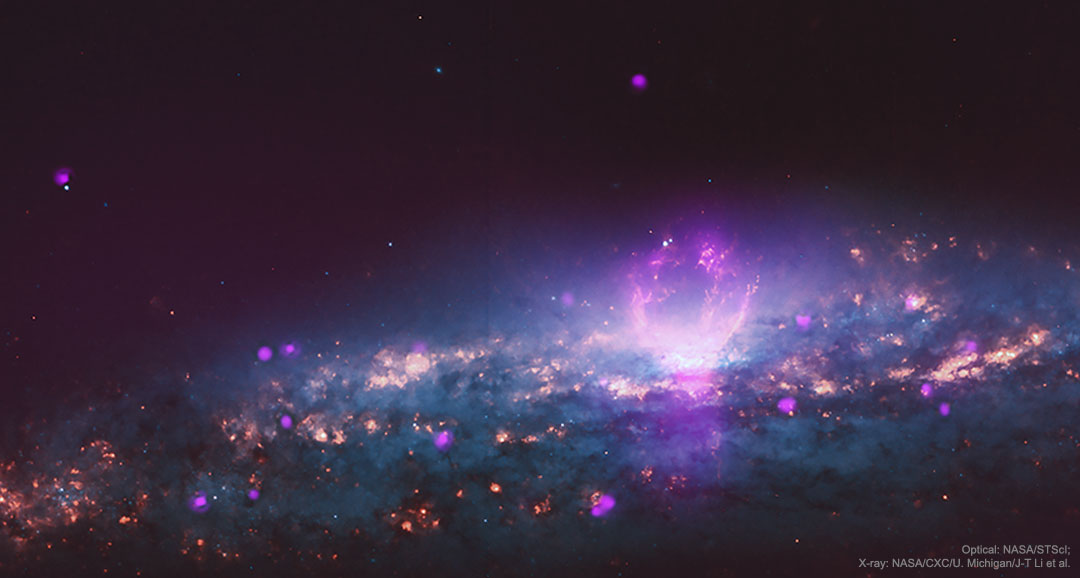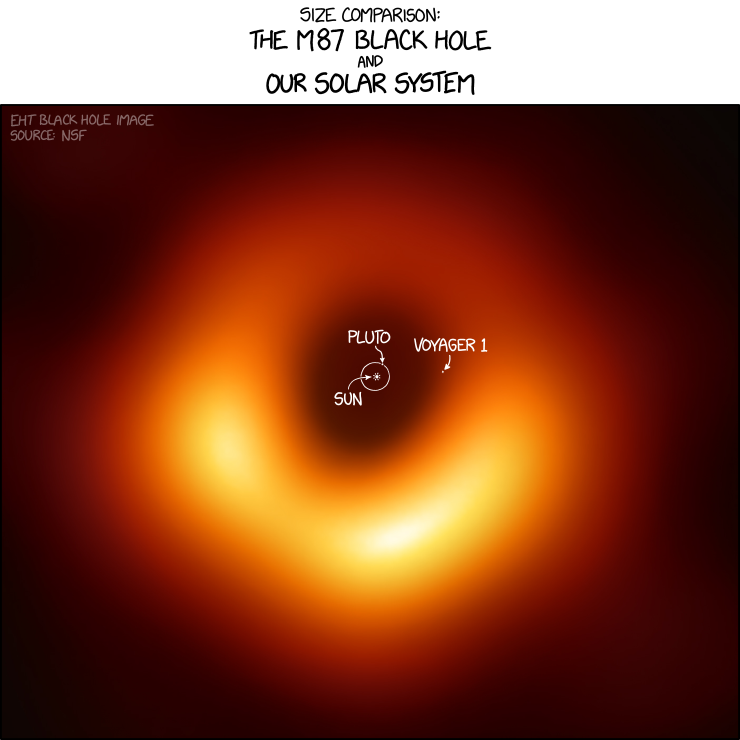
http://chandra.si.edu/photo/2019/ngc3079/
Moderator: Outsider Moderators



I think the Sag A* data is still being processed. Maybe due to there being more dust etc. in the way?Arioch wrote:While one can never say with a straight face that the first image of a black hole isn't cool, I can't help but be slightly disappointed that the black hole imaged was in the giant, distant M87 galaxy instead of Sag A* in our own Milky Way (which is what the pre-release hype seemed to indicate), and that the image essentially looks exactly as predicted. Sure, it's great to have existing theories confirmed, but it also means that we didn't learn anything new. (Though no doubt the boffins will tease many interesting new tidbits out of the data in the coming months and years.)
Agreed, there.Arioch wrote:What I'm really excited about is what they can do with the Even Horizon Telescope (the network of radiotelescopes used to capture the M87 black hole data) and other systems like it in the future. Imagine what you can do when you can image objects down to the resolution of a solar system at 50 million light years. A bit like the gravity wave observatories, this marks a new era in astronomy.
Imagine the headaches establishing the accurate timing required...GeoModder wrote:Imagine what you could do if you could add a couple telescopes on the moon to this setup.
Yeah, the issue was despite being a thousand times closer, Sag A* is a thousand times smaller than M87* and also less active, so it's actually apparently dimmer, and the interactions with nearby stars and its relative closeness meant that it was more of a moving target. From what I gathered reading up on it, they still plan to release a Sag A* image when it's ready, but that may not be for several years, as I think they said they aren't going to do new observations until 2020 due to technical problems. Keeping in mind that the image they just released was derived from observations made two years ago.Mithramuse wrote:I think the Sag A* data is still being processed. Maybe due to there being more dust etc. in the way?
I don't think this will work, because this method only works if observations are made at the same time in different locations (and precisely timing them down to the microsecond).Mithramuse wrote:In the same vein, I'm curious if anything ever came of thoughts about using observations six months apart to do this kind of thing, e.g. the size of the radio telescope is the size of Earth's orbit... at least, to some degree. Probably even more issues with calibrating the various 'scopes, though.
With a very precise and stable timebase and a coherent source, it's possible to use measurements taken over time...it's essentially how synthetic aperture radar works. But there's no coherent source here (and we certainly can't emit it ourselves), and doing it over a 6 month span would be quite a feat.Arioch wrote:Yeah, the issue was despite being a thousand times closer, Sag A* is a thousand times smaller than M87* and also less active, so it's actually apparently dimmer, and the interactions with nearby stars and its relative closeness meant that it was more of a moving target. From what I gathered reading up on it, they still plan to release a Sag A* image when it's ready, but that may not be for several years, as I think they said they aren't going to do new observations until 2020 due to technical problems. Keeping in mind that the image they just released was derived from observations made two years ago.Mithramuse wrote:I think the Sag A* data is still being processed. Maybe due to there being more dust etc. in the way?
I don't think this will work, because this method only works if observations are made at the same time in different locations (and precisely timing them down to the microsecond).Mithramuse wrote:In the same vein, I'm curious if anything ever came of thoughts about using observations six months apart to do this kind of thing, e.g. the size of the radio telescope is the size of Earth's orbit... at least, to some degree. Probably even more issues with calibrating the various 'scopes, though.
If you built your telescope at the wrong latitude, it wouldn't ever be able to point at the target. If you happened to build it at just the right latitude, it'd only be able to observe the target for days per month. Those observations would periodically be roughly lined up with Earth, reducing the baseline. Observations taken during the lunar night period would be limited to what can be powered by batteries, those in the day by the relative position of the sun. This is all in addition to the thermal cycling, the dust, and the fact that it'd cost a 1-2 orders of magnitude more to put the telescope on the lunar surface compared to just putting it in orbit, and you'll get a far smaller telescope for a given amount of material due to the need to have it support itself against 1/6th g. The moon is a terrible place for telescopes.GeoModder wrote:Imagine what you could do if you could add a couple telescopes on the moon to this setup.


planetesimal? Gosh no, that's some kind of alien habitat wandering aroun' the system!icekatze wrote:hi hi
I saw this a few days ago while the forums were down, but I just remembered it. A while back, there was some lengthy discussion about what kind of natural objects could exist in a white dwarf system. This most recent discovery adds another interesting twist.
Heavy metal planet fragment survives destruction from dead star
